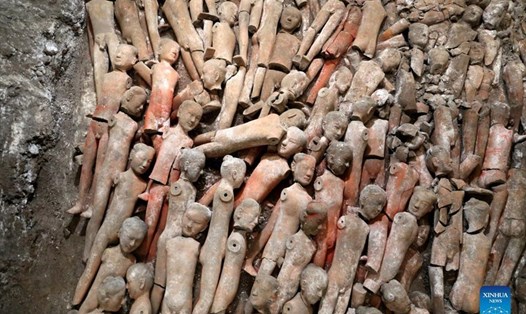Besides the wonders of the natural world, humans have created countless artificial wonders in history. Among the wonders of architecture and design and construction there are tombs, resting places of emperors and great people in the past. Below is a list of 5 most impressive architectural tombs in the world, according to Touropia.com's ranking.
5. Imam Husayn Temple
Husayn ibn Alis temple is located in the city of Karbala, Iraq and is located in the tomb of Husayn ibn ali, the second grandson of the forecaster Muhammad, near where he was killed in the Karbala battle.
This tomb is one of the most sacred places for the Shiama and many pilgrims visit this place every year. The walls of the pagoda surrounding the wooden gate are decorated with glass. The gates open up an inner yard divided into 65 smaller rooms, decorated beautifully from the inside and outside. Husayn's tomb is surrounded by a cage-like structure, found just below a golden arch.
4. Shirvanshahs Tomb
This mausoleum is part of the Shirvanshahs Palace, the largest monument of the Shirvan- Ab Ab sheron branch of Azerbaijani architecture, located in the inner city of Baku.
In addition to ShirvanshaHs, the complex also has the main building of the palace, a small stone house, burial tunnels, a mosque and the ruins of the bathroom. The tomb has a rectangle, at the top of the hexagonal arch, decorated from the outside with many stars. Sultan Khalilullah I ordered to build this light burial tunnel for his mother and daughter in the 15th century.
3. Shah-i-Zinda Tomb
Shah-i-Zinda is one of the most famous mausoleums in Central Asia, northeast of Uzbekistan. The Shah-i-Zinda mausoleum consists of three groups of structures connected together by four-roofed arched walkways. The earliest buildings here date back to the 11th-12th century and most of them are from the 1415th century.
The name Shah-i-Zinda, "The King of Life", is associated with the legend of Kusam ibn Abbas, the cousin of the prophecy Muhammad. According to legend, this person had his head chopped off but still lived and took his head down to a deep well (where according to legend is the Garden of Paradise) and lived there forever.
The mausoleum of the first emperor of the Qin Dynasty (221-206 BC), who succeeded in unifying China, is located near the city of Xi'an, China.
The tomb of this emperor has not yet been excavated, but his buried Terracotta Army has been excavated nearby and has become one of the top tourist attractions in China. It is estimated that the three pits contained the Terracotta Army with more than 8,000 soldiers, 130 distant soldiers with 520 horses and 150 knights of the real size.
1. Taj Mahal
The Taj Mahal in Agra is a giant white marble mausoleum, built from 1632 to 1653 under the orders of Emperor Mughal Shah Jahan in memory of his beloved wife.
Taj Mahal is one of the best preserved tombs and the most beautiful architecture in the world, one of the masterpieces of Mughal architecture, and one of the great wonders of India. Called "tears on the cheek of eternity", Taj Mahal Temple is a synthetic architectural complex. Besides the tomb of marble with white dome, it also has some other beautiful buildings, reflective lakes and large ornamental gardens with decorative bushes.





